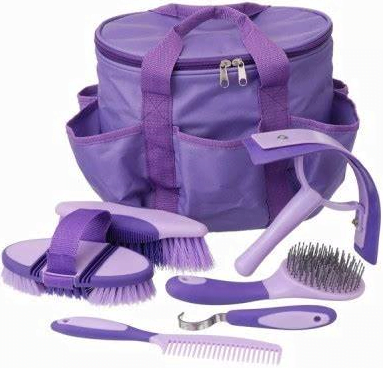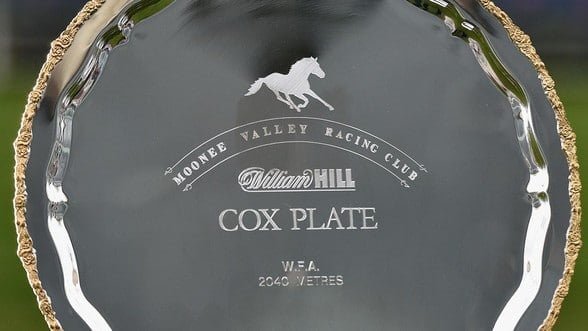Horses can be shot with broken legs?

Horses can be shot
Back in bush West, a steed with a busted leg could have invested its last seconds looking down the barrel of a cowboy’s gun. Horses can be shot typically after breaking their legs because they had a small chance of effective recovery. Even today, equines are commonly euthanized after a leg break.
Here’s why: It’s tough for a horse’s leg to heal due to a mix of factors. Their legs should take in substantial shock as their powerful bodies gallop at broadband. Horses engage in a great deal of exercise, and the repercussions of this habits can eventually cause deteriorated leg bones as well as increased opportunities to fall.
An additional point to take into consideration is how many leg bones equines have. Out of the 205 bones that make up a steed’s whole body, 80 of them are located in its legs [resources: O’Brien and also Sellnow] The intricate system of joints, bones, ligaments, tendons, cartilage material, lube, laminate and unguis that contribute to a horse’s fantastic speed can additionally be the cause of its failure. What’s more, 58 percent of a horse’s weight hinges on its front legs– that’s why most of its injuries occur there [resource: Swann Horse Osteopathy]
Numerous issues can impact equines’ legs, like swelling, osteoarthritis, joint issues and also illness and obviously, broken bones. Recuperation is further difficult since horses cannot lie down the whole time they recover. Horses are set to stand a great section of the moment– consisting of while they rest. As a target types, they need to be ready to take off as fast as feasible, which is why horses stay on their toes (or hooves to be much more precise) [source: Tikkanen]
Nonetheless, assisted suicide is not always a certainty any longer. New medical methods and also innovation use options that were as soon as elusive to an equine in such a scenario.
Can You Deal with a Steed’s Broken Leg?
Though steeds are still frequently euthanized after breaking a leg, today’s procedure is normally accomplished in an extra gentle fashion, like with an intravenous injection of barbiturates, executed by a vet [source: Nessom] (The American Organization of Horse Practitioners does state that horses can be shot to the brain is acceptable, preferably with prior sedation.).
As well as it’s not just racehorses that endure leg injuries– small horses can, as well. In addition to kicks as well as collapses, basic crashes like errors can create significant breaks as well as injuries. Fatigue and also the musculoskeletal structure of the equine itself can likewise be factors. Hard-to-diagnose preexisting issues such as stretched tendons, hairline cracks and microfractures can likewise contribute to damaged bones.
If the worst should occur and a horse breaks its leg, there are a variety of elements that assist determine if a vet can fix a horse’s damaged leg as well as bring the animal back to healthiness [source: Equnews] Some questions a proprietor with an injured pet needs to ask consist of:
How worst is the horse’s leg break?
The kind of break makes a large distinction in establishing whether a steed will have the ability to recuperate successfully. Steeds experience cracks along a large spectrum of severity. For instance, having an incomplete crack includes the bone splitting, however not entirely damaging. This is simpler to take care of than a full fracture, which can lead to the bone ruining. Several horses with insufficient fractures can recoup. Considerable damage and multiple breaks are closely linked with the feasible requirement for mercy killing. Whether the bone pieces stick out via the skin is also a factor to consider since revealed bone can enhance the chance of difficulties, as we’ll review listed below.
How old is the horse with leg break?
More youthful horses normally stand a much better opportunity at recouping from a busted leg due to the fact that their bones are still expanding. These steeds are usually lighter and placed much less weight on the injury
Actual point from where the Horse leg broken?
Bones in various areas of the leg have various degrees of success when it pertains to healing. As an instance, a break in the lower leg can be difficult to mend because equines have less blood vessels there. The recuperation procedure can take even longer if among the horse’s larger bones break.
Nevertheless, there are some brand-new methods for treating steeds. For instance, in 2016, College of Saskatchewan scientists debuted a robotic lift system developed to assist equines better recover from fractures and related surgeries. The innovation assists to extra evenly distribute weight so that the afflicted area can recover [resource: Williams] Also, specialists in the field remain to fine-tune surgical procedures, such as the double plate fixation technique, which has actually shown substantial success in the last few years. Sadly, it is costly and several veterinarians are not aware of the procedure or reluctant to subject steeds to a prolonged recuperation [source: Preigh]
You could be asking, “Although it’s difficult for a steed’s damaged leg to recover, why not let nature run its course and make a decision whether the equine will live or pass away?” We’ll discuss why this is not a great idea next.
Complications of Dealing horse with a Broken Leg?
Even if an equine proprietor makes a decision to give the broken leg a possibility to heal, there are a variety of things that can fail during the recuperation process. Numerous uncomfortable conditions can develop during the recovery procedure. Some individuals take into consideration euthanizing the animal extra humane than letting it live as well as experience.
You typically can’t save the steed’s life simply by dismembering the damaged leg. Steeds aren’t such as dogs, which can generally live a fairly active lifestyle on 3 legs. Equines are heavier as well as this weight can trigger problems for the other hooves. They also need to have the ability to get up as well as below a lying placement, and that’s difficult with three legs, provided their weight distribution.
Unfortunately, few horses can get used to prostheses. Horses have to be in good total health, be able to adjust to brand-new scenarios and also have an owner that agrees to invest his or her money and time on follow-up prosthesis treatments. Size as well as type/location of the injury likewise make a huge distinction in prosthetic success.
There are several issues of treating a broken leg. Right here are a couple of instances of some of the problems that can impact recovery:
Weight:
The majority of horses are heavy pets and their legs as well as hooves are little in contrast. Favouring a damaged leg usually forces the healthy legs to bear greater than their share of the weight, and this– together with various other variables– can raise the possibilities of creating crippling problems like laminitis and abscesses (American Association of Equine Practitioners (AAEP) The specific cause of laminitis (an inflammatory disease of the material connecting the unguis to the leg bone, which can cause their separation) is unknown, however unpleasant laminitis substantially boosts the likelihood of mercy killing. Slings that cover under the abdominal area and hold the steed up (taking the weight off the legs) are commonly utilized for short time periods however cannot protect against laminitis. Slings can be uneasy, create bedsores and also bring about major stomach problems. If a sling is made use of for also long, the recovered leg cannot bear the horse’s weight properly and also laminitis could still establish. The weight of a steed must be evenly spread on all four legs.
Movement:
Horses are pets that such as to move and also there’s a huge risk, they may reinjure themselves at some time throughout the recovery process. A horse with a much more relaxed disposition that doesn’t mind having its activity restricted, typically has a far better chance of appropriately healing
Infection:
Open up fractures are commonly made complex by infection, which can be even more complicated relying on where the infection is located. Since equines do not have muscle mass below their hock joints (comparable to the human ankle), there aren’t lots of blood vessels to carry antibodies to the website of infection, thus making it challenging to treat [source: Carson] This truth makes providing an equine prescription antibiotic hard too. Offering a horse enough prescription antibiotics to be efficient can eliminate the horse’s all-natural digestive microorganisms as well as interact with vital pain medication [resource: Horse Healthcare]
Pain:
Overwhelming discomfort is a double-edged sword when it concerns steeds. Pain requires to be treated, however you run the risk of overmedicating the steed. If the equine really feels completely pain-free, there’s a great chance the pet might reinjure its leg. The intensity of discomfort from common postoperative issues, such as laminitis, lies at the root of a choice to euthanize.
Expense:
The lengthy as well as challenging process of bringing an equine back to healthiness can be expensive, and also there’s no warranty it’ll function. Besides being cost-prohibitive, rehab can be hindered by an absence of offered facilities that can deal with badly hurt horses and also a basic absence of understanding.
Can a horse recoup from a busted leg?
Steeds have an extremely small chance of recovering from a damaged leg because of a combination of factors. For example, a horse is more probable to recuperate from an incomplete crack than a total fracture. Similarly, the younger as well as smaller sized the horse, the better its possibility of recovery is. Bones in different locations of the leg likewise have varying possibilities of recuperation.
Do you have to euthanize an equine if it damages its leg?
Usually, the only humane choice after a horse breaks its leg is to euthanize it. This is since equines have hefty bodies and delicate legs, and busted leg bones are usually shattered making surgical procedure and also recovery impossible.
Why do they put equines down due to a broken leg?
There are numerous reasons that equines need to be put down as a result of a busted leg. One of the most usual factors is that most of times, the steed has smashed their leg bone, making surgical procedure impossible. If surgical procedure can be done, there are still substantial threats. Steeds spend most of their time standing (also when they rest) as well as they have a really high flight danger, both of which raise the risk of re-injury during the healing duration. Additionally, 60 to 65 percent of their weight is on their front legs, enhancing the chance of creating debilitating problems like laminitis and abscesses during healing. Various other variables include extreme discomfort, infection and also the high price of treatment.
Exactly how are horses euthanized on the track?
Today’s procedure of euthanizing a horse on the racetrack is extra gentle than the old shooting approach. Steeds with a busted leg are euthanized by a licensed vet using an intravenous shot of barbiturates.
Do equines break their legs quickly?
Leg injuries, particularly busted bones and joint issues, prevail among steeds. Between 60 and also 65 percent of a horse’s weight hinges on its front legs as well as the leg bones are quite vulnerable compared to the body weight of an equine. Likewise, 80 of the 205 bones in a steed’s body lie in its legs, boosting the chance of injuries in the region. Overall, in between regular movement like cantering and also trotting as well as activities like leaping, an equine’s legs go through a lot of tension.
Conclusion
According to the above discussion, I can bluntly say keeping in mind when it comes to even for normal use of the horse instead racing, that a horse can be shooted if his leg is broken. A horse with a broken leg can be treated with the collaboration of veterinarian but it does not worth keeping a horse as injured but at the same time a horse with a broken leg is euthanized by licensed vet on track. That’s another matter if you love a horse that’s another emotional matter between an owner and a horse if they have created a bond with each other.





